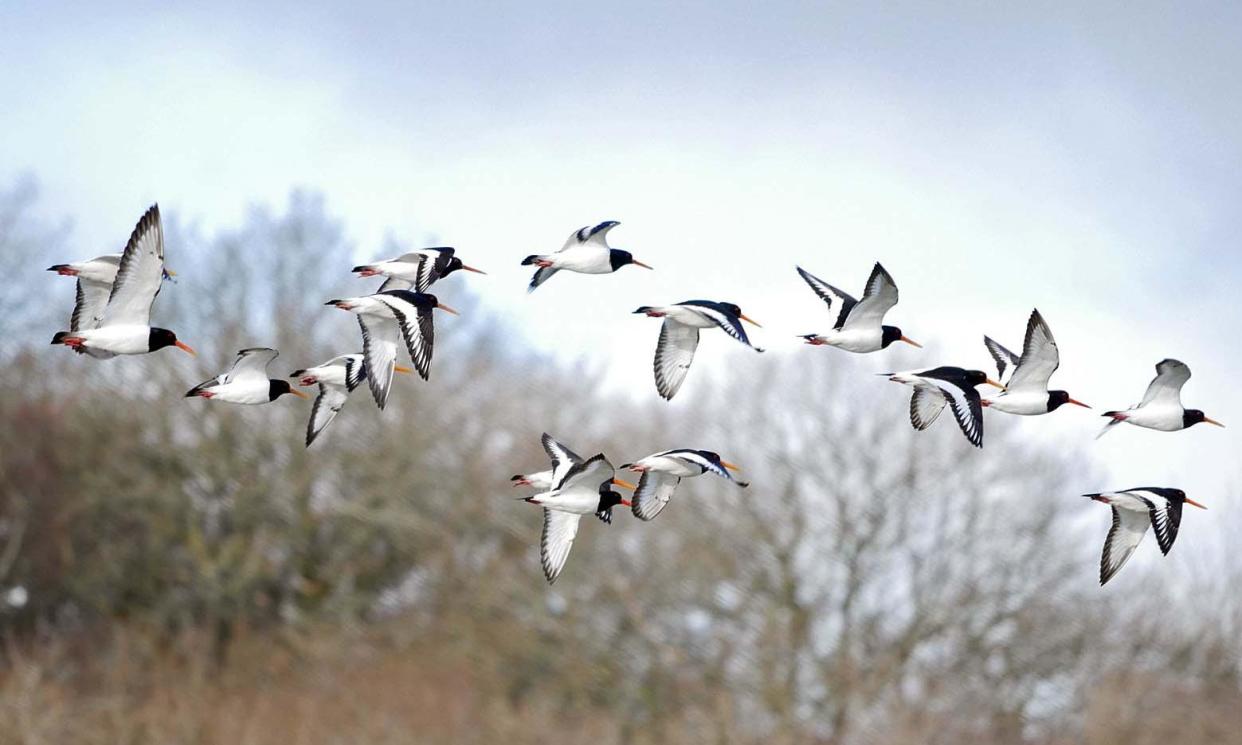Country diary: Winner and losers at the lowered reservoir

Tunstall reservoir is a favourite place to visit in March, to look and listen for spring’s progress. Today, a flypast of pied plumage, scarlet beaks and “pic-pic” calls announced the arrival of oystercatchers, returning to breed in larger numbers than I’ve seen in recent years. A heron, feeding in the nature reserve behind the bridge, where Waskerley Beck flows into the reservoir, rose on languid wingbeats and settled in the heronry, in the branches of Norway spruces, where there would already be eggs in nests. Then, from the top branches of an alder, a burst of song from a mistle thrush, another early nester.
So far, so reassuring, but there was something missing: water. Lord knows we’ve had enough rainfall since Christmas; the reservoir ought to be overflowing, not drier than a summer drought. Throughout winter, the water level has been drastically lowered – an essential safety precaution while engineering works are carried out on the 150-year-old dam and spillway. More than half of the reservoir surface is currently sand and bare rock, etched by the meandering beck, carving a path towards the remaining shallow lake close to the dam. Usually, a raucous, swaggering gaggle of greylag geese gather here, swimming in water 10ft deep. Instead, chaffinches are pecking seeds from stranded dry debris, where new green shoots are sprouting.
The change in hydrology is temporary. In summer, the reservoir should be full again, ready to top up the River Wear downstream, but until then, there will be wildlife winners and losers. The biggest beneficiaries must be a dozen cormorants that have never enjoyed such easy fishing, with their prey concentrated in a shrinking volume of water. Likely losers could be great crested grebes, which return every April to perform their elaborate aquatic courtship dance at the head of the reservoir, often building a nest that’s anchored to branches of inundated willows.
But the immediately question is: how will the toads respond? Soon, large numbers will begin to emerge from hibernation in Backstone Bank Wood, heading for what should be their ancestral shallow breeding lake in the wetland nature reserve, which is now dry land, covered in grasses and sedges, and studded with fresh molehills.
• Country diary is on Twitter at @gdncountrydiary


